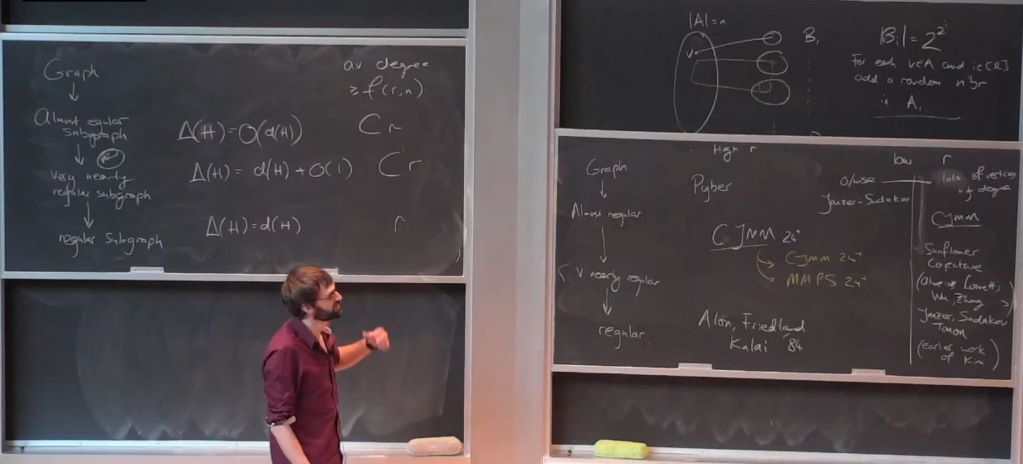Introductory Workshop - Graph Theory: Extremal, Probabilistic and Structural: Finding regular subgraphs
Presenter
February 12, 2025
Keywords:
- extremal graph theory
- random graphs
- probabilistic methods
- structural graph theory
- Ramsey theory
MSC:
- 05C35 - Extremal problems in graph theory [See also 90C35]
- 05C55 - Generalized Ramsey theory [See also 05D10]
- 05C75 - Structural characterization of families of graphs
- 05C80 - Random graphs (graph-theoretic aspects) [See also 60B20]
- 05D40 - Probabilistic methods in extremal combinatorics
- including polynomial methods (combinatorial Nullstellensatz
- etc.)
Abstract
Finding regular subgraphs can be useful. Many results assume a graph is regular or are easier to prove when they are. In 1975, Erdős and Sauer asked for an estimate, for any constant r, on the maximum number of edges an n-vertex graph can have without containing an r-regular subgraph. In 2023, Janzer and Sudakov gave an upper bound of the form C(r)n log log n, matching an earlier lower bound by Pyber, Rödl and Szemerédi and thus resolving the Erdős-Sauer problem.
We develop the methods for finding a regular subgraph, showing not only that we can take C(r)=O(r^2), which is optimal up to the implicit constant, but giving estimates for the maximum number of edges an n-vertex graph can have without containing an r-regular subgraph for all possible values of r, which are similarly tight except for around a small `transition point' at r=log n.
I will discuss the framework now developed to find regular subgraphs efficiently, which uses algebraic techniques of Alon, Friedland and Kalai, the recent breakthroughs on the sunflower conjecture, techniques to find almost-regular subgraphs developed from Pyber’s work, and, crucially, a novel random process that efficiently finds a very nearly regular subgraph in any almost-regular graph.
Joint work with Debsoumya Chakraborti, Oliver Janzer and Abhishek Methuku.
